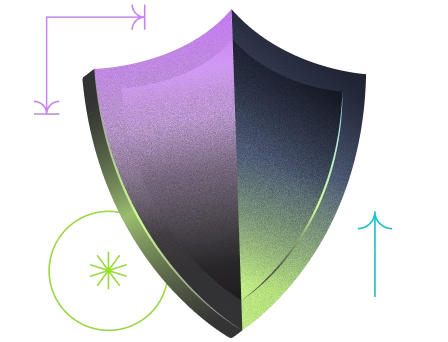The european digital identity landscape is undergoing a fundamental transformation with the evolution of eIDAS regulation. As the european parliament council prepares to implement eIDAS 2.0, businesses across Europe must understand how these changes will reshape digital transactions and compliance requirements.
At Yousign, we help businesses navigate evolving regulatory landscapes while maintaining compliance with electronic identification authentication requirements. This comprehensive analysis explores how eIDAS 2.0 will transform digital transactions and what organizations need to know to prepare for the future.
Understanding eIDAS Evolution
The journey from eIDAS 1.0 to 2.0 represents a paradigm shift in how Europe approaches digital identity solutions and cross-border digital transactions.
What is eIDAS and Its Historical Context
The regulation european parliament originally established eIDAS to create a unified framework for electronic identification trust services across EU member states.
eIDAS regulation came into force in 2016 to enable secure electronic interactions between citizens, businesses, and public authorities across Europe. The regulation established legal frameworks for electronic identification authentication, qualified electronic signatures, and trust services electronic that operate across all EU member states.
The original framework focused on public private services integration and cross-border recognition of national electronic identification schemes. It established technical standards for trust service providers and created legal certainty for electronic signatures seals used in commercial transactions.
Good to know:
The success of eIDAS 1.0 in facilitating cross-border digital transactions laid the groundwork for the more ambitious eIDAS 2.0 framework.
Key Limitations of Current eIDAS Framework
Despite its success, the current digital identity framework faces limitations that eIDAS 2.0 aims to address through enhanced capabilities.
- Limited Citizen Adoption: Current national digital identity schemes have varying adoption rates across member states, with many citizens lacking convenient electronic identification authentication methods.
- Fragmented User Experience: Complexity of different national systems creates barriers to seamless cross-border digital services.
- Private Sector Limitations: Current frameworks focus primarily on government interactions, with limited provisions for private sector applications.
- Technical Interoperability: Varying implementations across member states create integration challenges for trust service providers.
eIDAS 2.0: Revolutionary Changes Ahead
The upcoming regulation european parliament revisions introduce groundbreaking concepts that will transform how Europeans access digital services and conduct online transactions.
European Digital Identity Wallet
The centerpiece of eIDAS 2.0 is the european digital identity wallet concept that will provide every EU citizen with secure, interoperable digital identity capabilities.
- Universal Access: Every EU citizen will have access to a digital identity wallet provided by their member state, ensuring universal availability across the union.
- Cross-Border Functionality: Digital identity wallets will operate seamlessly across all EU member states, enabling citizens to access services regardless of location.
- Private Sector Integration: Unlike current government-focused systems, eIDAS 2.0 digital identity wallets will support private sector applications and commercial services.
- User Control: The digital identity framework emphasizes user control over personal data, allowing selective sharing while maintaining privacy.
Enhanced Trust Services Framework
eIDAS 2.0 expands the trust services electronic ecosystem to support new technologies while maintaining high security standards.
- Expanded Service Categories: New trust service providers categories include electronic ledger services, archiving services, and enhanced authentication capabilities.
- Advanced Authentication: Enhanced authentication trust services provide stronger website authentication and fraud prevention capabilities.
- Blockchain Integration: The updated framework european digital identity includes provisions for blockchain-based trust service providers and distributed ledger technologies.
Our secure electronic signatures platform already incorporates many features that align with emerging eIDAS 2.0 requirements.
Try electronic signature for free for 14 days
Impact on Digital Transactions
The transformation brought by eIDAS 2.0 will fundamentally change how businesses and citizens conduct digital transactions across Europe.
Enhanced Security and Trust
The new digital identity solutions framework provides unprecedented levels of security and trust for digital transactions.
- Stronger Authentication: Digital identity wallets incorporate advanced technologies including biometric verification and cryptographic keys that exceed current security standards.
- Reduced Fraud: The comprehensive electronic identification trust framework makes identity fraud significantly more difficult while providing clear audit trails.
- Legal Certainty: Enhanced identification trust services ensure digital transactions maintain validity across all EU member states without additional verification.
- Streamlined Compliance: Businesses using eIDAS 2.0 compliant trust service providers automatically meet regulatory requirements across the EU.
Improved User Experience
The user-centric design of eIDAS 2.0 dramatically improves the digital transaction experience for both consumers and businesses.
- Single Sign-On: Digital identity wallets enable seamless authentication across multiple services, reducing password fatigue while maintaining security.
- Faster Processing: Automated identity verification eliminates manual steps, significantly reducing transaction completion times.
- Mobile-First Design: Digital identity solutions prioritize mobile accessibility for smartphone-based authentication and transactions.
Business Process Transformation
Organizations must adapt their operations to leverage opportunities created by the enhanced digital identity framework.
- Redesigned Customer Journey: Businesses can create competitive advantages through superior user experiences with digital identity wallet integration.
- Automated Compliance: Trust services electronic integration enables automated compliance checking, reducing manual processes while improving accuracy.
- Cross-Border Access: Simplified european digital identity verification opens new market opportunities by reducing barriers to cross-border commerce.
Preparing for eIDAS 2.0 Implementation
Organizations must begin preparing now for the transition to eIDAS 2.0 to ensure smooth implementation and competitive advantage.
Technical Preparation Requirements
The technical complexity of eIDAS 2.0 requires systematic preparation across multiple business domains.
- System Integration: Organizations need to assess current systems and plan for digital identity wallet integration, including API development and security updates.
- Security Infrastructure: Enhanced trust service providers requirements may necessitate infrastructure upgrades, including encryption and audit logging capabilities.
- Staff Training: Technical teams require training on new electronic identification trust protocols and integration best practices.
- Testing Procedures: Comprehensive testing ensures authentication trust services integration functions correctly across different scenarios.
Compliance and Legal Considerations
Understanding the legal implications helps organizations avoid compliance issues while maximizing business benefits.
- Regulatory Assessment: Organizations should assess how eIDAS 2.0 affects existing compliance obligations across different EU member states.
- Data Protection Alignment: The intersection with GDPR requires careful analysis to ensure comprehensive compliance frameworks.
- Contractual Updates: Existing contracts with trust service providers may require updates to address new digital identity framework requirements.
- Risk Management: Risk frameworks need updates to address new threats and opportunities created by enhanced capabilities.
Organizations can benefit from digital transformation strategies that incorporate eIDAS 2.0 compliance from the beginning.
Challenges and Opportunities
The transition to eIDAS 2.0 presents both significant challenges and unprecedented opportunities for organizations across Europe.
Implementation Challenges
Despite its benefits, eIDAS 2.0 implementation presents complex challenges that organizations must address proactively.
- Technical Complexity: The sophisticated digital identity framework requires significant technical expertise and resources for proper implementation.
- Cost Requirements: Organizations may face substantial costs for system upgrades, staff training, and compliance preparation.
- Timeline Pressures: Phased implementation creates deadline pressures for organizations balancing preparation with ongoing operations.
- Interoperability Concerns: Ensuring seamless integration between digital identity wallets and existing systems requires careful planning.
Strategic Opportunities
Forward-thinking organizations can leverage eIDAS 2.0 to create competitive advantages and new business opportunities.
- Market Differentiation: Early adoption of european digital identity capabilities can provide competitive advantages through superior customer experiences.
- New Business Models: Enhanced trust service providers capabilities enable new business models and services previously impossible.
- Operational Efficiency: Automated electronic identification authentication reduces costs while improving accuracy and satisfaction.
- Innovation Acceleration: The robust digital identity solutions framework provides foundation for innovative services leveraging trusted digital identity.
Industry-Specific Impacts
Different sectors will experience varying impacts from eIDAS 2.0 implementation, requiring tailored preparation strategies.
Financial Services
The financial sector will see significant benefits from enhanced digital identity solutions that improve security while reducing friction.
- Enhanced KYC: Digital identity wallets streamline know-your-customer procedures while providing stronger identity verification.
- Fraud Reduction: Advanced authentication trust services significantly reduce fraud risk while improving customer experience.
- Regulatory Compliance: Financial institutions benefit from automated compliance checking and enhanced audit trails.
Healthcare Sector
Healthcare organizations can leverage eIDAS 2.0 to improve patient privacy while enabling secure information sharing.
- Patient Identity: Digital identity framework capabilities ensure accurate patient identification while protecting sensitive information.
- Cross-Border Healthcare: European patients can access healthcare services across member states with verified digital credentials.
- Medical Records: Qualified electronic signatures enable secure prescription management and medical record sharing.
Frequently Asked Questions - The Future of eIDAS and Its Impact on Digital Transactions
What is the main difference between eIDAS 1.0 and 2.0?
eIDAS 2.0 introduces digital identity wallets for all EU citizens and expands services to private sector applications, unlike the primarily government-focused original framework.
When will eIDAS 2.0 be fully implemented?
The regulation european parliament requires member states to provide digital identity wallets by 2030, with phased implementation beginning earlier.
How will digital identity wallets work?
Digital identity wallets will provide secure, user-controlled digital credentials that work across all EU member states for both public and private services.
What should businesses do to prepare?
Organizations should assess current systems, plan for trust service providers integration, train staff, and develop compliance strategies for eIDAS 2.0.
Will eIDAS 2.0 replace current authentication methods?
eIDAS 2.0 will complement existing methods while providing enhanced capabilities, with gradual migration to digital identity solutions over time.
Shaping Europe's Digital Future
The evolution to eIDAS 2.0 represents more than regulatory compliance—it's a fundamental transformation of how Europe approaches digital identity and trust. Organizations that understand and prepare for these changes will position themselves for success in an increasingly digital marketplace.
European digital identity capabilities will become essential infrastructure for EU businesses. The digital identity framework provides unprecedented opportunities for innovation while ensuring security and privacy protection.
Success requires strategic thinking about how digital identity solutions can enhance operations, improve customer experiences, and create competitive advantages. Organizations must begin preparation now to ensure smooth transition and optimal benefit realization.
Ready to Prepare for eIDAS 2.0?
Future-proof your digital transactions with Yousign








